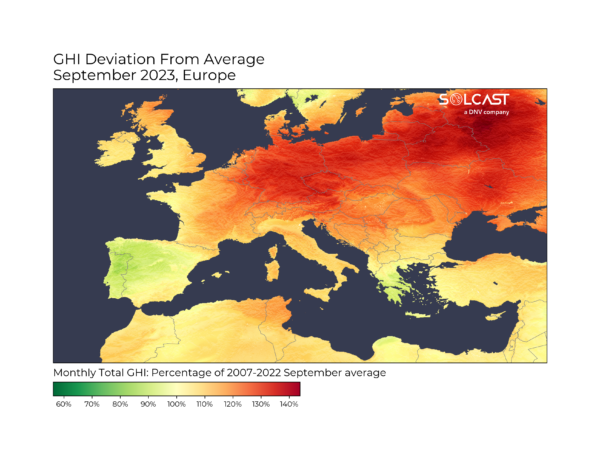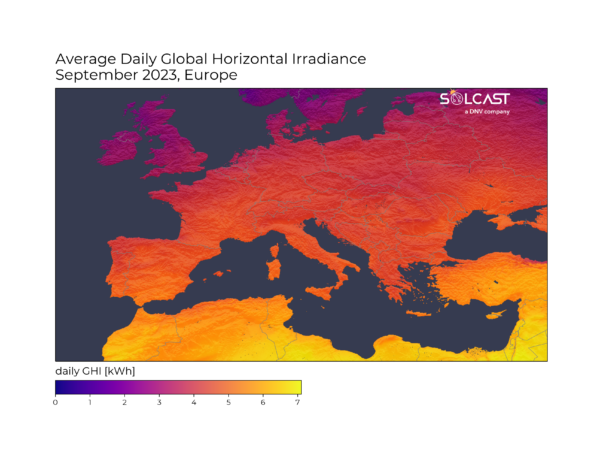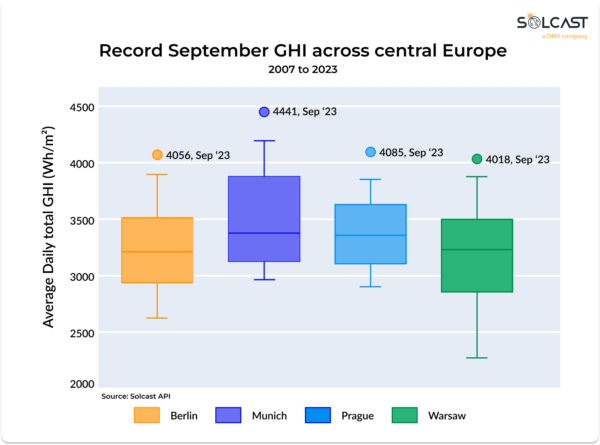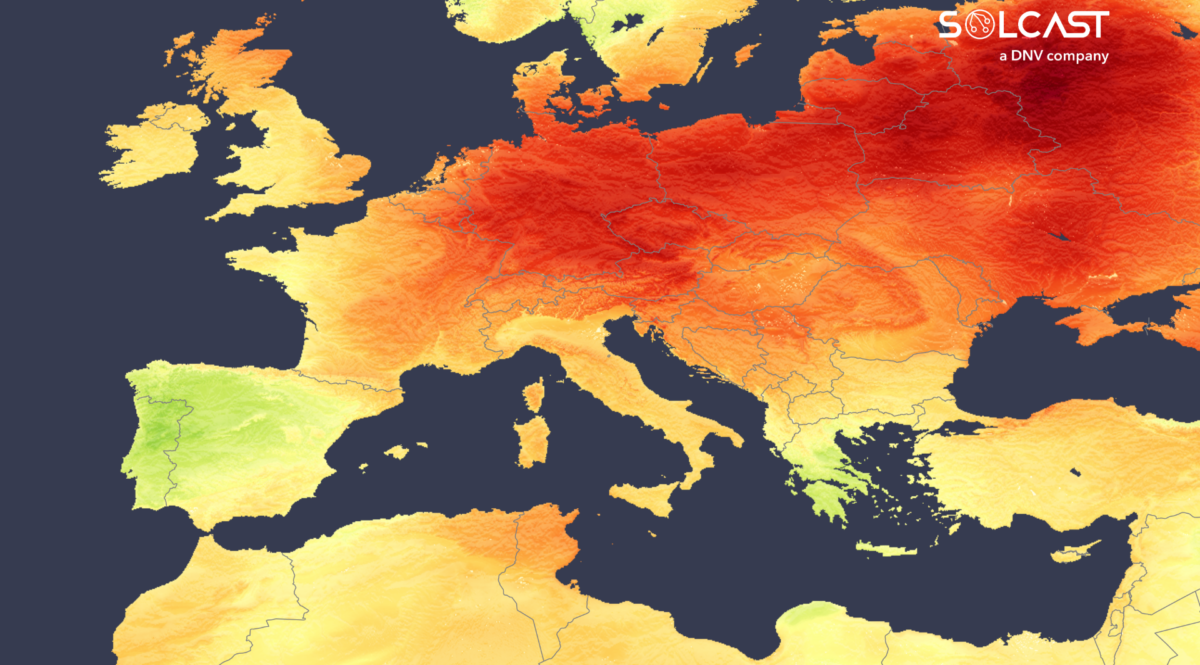Germany and Central Europe saw their highest September irradiances in at least 17 years, due to an “Omega block” weather pattern. These levels reached 130-140% of historical September averages according to data collected by Solcast, a DNV company, via the Solcast API.
The record irradiances were caused by an ‘Omega’ blocking pattern that kept high pressure stuck over Central Europe, leading to consistently clear skies there, but pushed cloud and storms southward. This pattern is similar to other El Nino late summers in the region, but was more persistent, leading to the highest September Irradiance seen over Germany and Central Europe in Solcast’s 17 years of data. This pattern also led to concentrated precipitation further south, causing floods across Greece, Turkey and Spain. Cloud associated with that rain also decreased irradiance in those regions.

These patterns have driven significantly higher irradiance than normal for September from Germany to Russia. Somewhat making up for a cloudier than normal August, solar providers will have seen up to 130% of historical September averages. As can be seen in the below average daily GHI, Germany and Poland received roughly the same irradiance across the month as Spain and Portugal. This pattern is
particularly unusual, especially given the shorter days further north.

Popular content
While such patterns align with previous El Nino years, the outcome this year stands out. Analysis using the Solcast Historical Time Series indicates a significant surge in September irradiance, surpassing any year in recent history. Major cities like Berlin, Munich, Prague, and Warsaw reported heightened September irradiance levels, with results closer to August averages than September. In contrast, the Iberian Peninsula and Greece saw diminished levels, with Lisbon and Athens capturing only around 80% of their typical September irradiance.

Solcast produces these figures by tracking clouds and aerosols at 1-2km resolution globally, using satellite data and proprietary AI/ML algorithms. This data is used to drive irradiance models, enabling Solcast to calculate irradiance at high resolution, with typical bias of less than 2%, and also cloud-tracking forecasts. This data is used by more than 300 companies managing over 150GW of solar assets globally.
The views and opinions expressed in this article are the author’s own, and do not necessarily reflect those held by pv magazine.
This content is protected by copyright and may not be reused. If you want to cooperate with us and would like to reuse some of our content, please contact: editors@pv-magazine.com.


1 comment
By submitting this form you agree to pv magazine using your data for the purposes of publishing your comment.
Your personal data will only be disclosed or otherwise transmitted to third parties for the purposes of spam filtering or if this is necessary for technical maintenance of the website. Any other transfer to third parties will not take place unless this is justified on the basis of applicable data protection regulations or if pv magazine is legally obliged to do so.
You may revoke this consent at any time with effect for the future, in which case your personal data will be deleted immediately. Otherwise, your data will be deleted if pv magazine has processed your request or the purpose of data storage is fulfilled.
Further information on data privacy can be found in our Data Protection Policy.